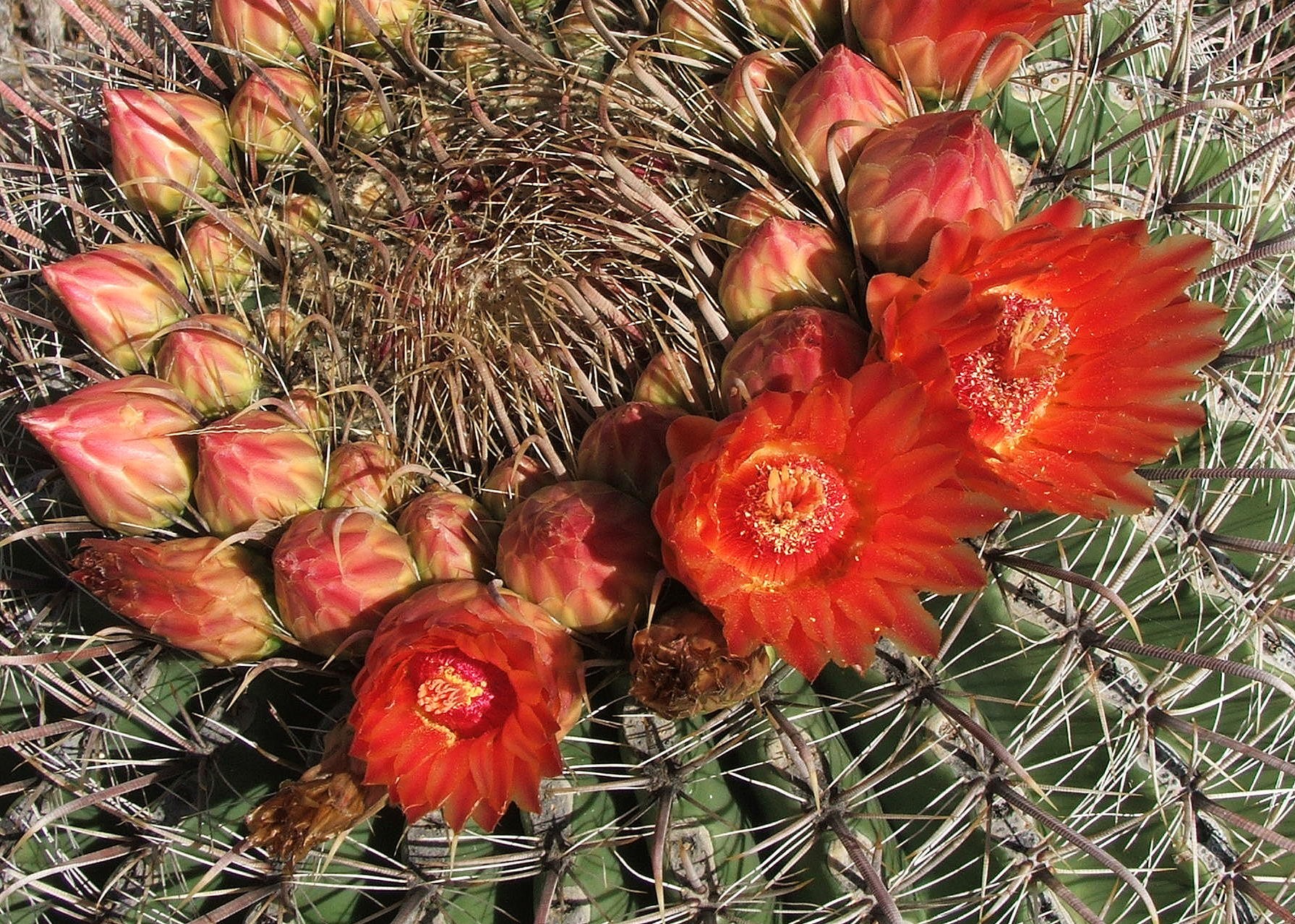Keeping Pace with Warming—Can Plants and Animals Move Fast Enough?
I recently spoke with Dave Bertelsen about the effect of climate on flowering dates. Bertelsen is a local Tucsonan and a self-trained expert on botany in the Catalina Mountains north of Tucson. He’s spent more than 24 years meticulously recording the dates flowers first bloom on a rugged Finger Rock Canyon hiking trail, compiling a rich and unique data set. After reading a climate modeling paper in the journal Nature that discusses the speed of warming in different ecosystems, I wanted to hear how plants were moving in response to a changing climate from someone with their boots on the ground. Bertelsen’s boots are definitely worn for wear. He’s hiked more than 1,274 round trips of the 10-mile trail.

View of Finger Rock Canyon in the Santa Catalina Mountains. credit: Zack Guido
The Nature paper “The Velocity of Climate Change,” published in December 2009, stated that plants and animals that require a narrow temperature range to live will be forced to migrate in order to remain in the same climate in which they evolved. Those that can keep pace with climate change will adapt. Those that cannot will likely perish.
The peer-reviewed paper extrapolates current temperature gradients in space into the future, but uses temperature changes derived from global climate models to calculate the speed necessary for species to remain in the same temperature. It’s a slick approach that yielded interesting conclusions. First, species living in flat landscapes will need to move the fastest. Think of a mountain trail. Since temperature deceases about 7 degrees Celsius per vertical kilometer, moving upslope a few hundred vertical meters can lower temperature by about one degree. On the other hand, in a large flat area like Death Valley the travel distance is much greater because topographic change is less. And second, deserts and xeric shrublands that characterize many regions in the Southwest have the third highest velocity of climate change (the velocity depends on the model emission scenario used; the authors present the moderate A1B scenario).
These results raise important questions, particularly for land managers. For example, will current reserves or protected areas be large enough to contain the migration necessary for species survival? Are species that are important to the overall health of the ecosystem—so-called cornerstone species—at risk?
When I spoke with Dave Bertelsen about plant movements on the Finger Rock Trail, he had a lot to say. Since 1981, when his treks first began, he has made more than 131,400 observations of the blooming dates corresponding to about 360 plant species occupying a 4,000-foot vertical elevation range. It’s a one of a kind data set.

Blooming barrel cactus along Finger Rock Trail. credit: Zack Guido
His observations have revealed that more than 15 percent of the species currently bloom at elevations as much as 1,000 feet higher than in the early 1980s. But, he also said, many species are not moving and not blooming earlier in the year, which is contrary to what many scientists expect with increasing temperatures. Only 25 percent of the 363 species between 1984 and 2003 exhibited a significant change in their upper or lower elevation limits, or both, according to a peer-reviewed article published in Global Change Biology in 2009. Bertelsen has also seen an increase in heat-loving plants like Mohave and spineless prickly pear cacti. In other words, he says, the ecosystem is indeed in flux and changes are not subtle or slow. Some plants are already adapting and some have yet to move. While he has observed declines in the numbers of some species, it’s too early to tell if some will completely disappear.
For more information, check out the peer-review articles alluded to in this post and the two articles I wrote on the subject here and here.

